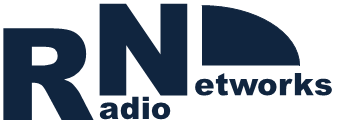Introduction.
Lectures will be given on Fridays, from 12 pm till 3 pm, in Room 9, “Chimica Industriale” building (100 m from the Engineering School in Viale Risorgimento 2), in the fall semester (Sept. 15 – Dec. 21, 2022). It is taught in English.
It provides three credits, and a pass/fail outcome.
It is offered as an elective course to the third year students of the Bachelor degree in Electronics and Telecommunications. However, it can be taken by students enrolled in the Bachelor or Master degrees in ANY program in the area of information engineering: Telecommunications, Electronics, Automation, Automotive, Computer Science or Electrical Engineering. Additionally, students from Management Engineering can also opt for it. The contents of technical nature will be presented by means of tools/approaches that will require minimal background on wireless communications.
Goals.
The student will be capable of identifying relevant and business-oriented applications of the IoT, the enabling wireless technologies and platforms, and predict network performance. Group work will be pursued. Hands-on-data sessions will allow students to get acquainted with professional IoT applications; the data is taken from prototype LoRaWAN and 5G IoT networks.
In particular, the course addresses applications of the IoT world that have a network implication. The key course topic is IoT network connectivity. Assume you have conceived an IoT solution based on nodes made of i) an hardware/firmware/software platform equipped with ii) a set of sensors/actuators and iii) wireless connectivity, plus iv) an application that processes data and provides services to the end-user. How many nodes can the network based on the technology you identified support? Tens, thousands, billions? The course addresses those IoT applications whose success depends on network scalability issues.
Course Eco-System.
Prospective makers will be given the chance to progress further, after the course, through Bachelor or Master theses oriented to the actual development of their ideas; this will be possible through the industry eco-system supporting the course: HW/SW platforms made available by WiLab (the National Laboratory of Wireless Communications) and companies/consortia including BI-REX, TIM and Lepida.
Syllabus.
The course syllabus is split into six parts:
1) An introduction to the IoT (approximately three hours).
2) Fundamental theoretical tools for understanding the networking aspects of IoT applications. The analysis of IoT wireless networks will be approached through basic theory (approximately twelve hours).
3) The steps to design a scalable IoT solution: from an idea to the identification of network technologies useful/available to implement it, and to the assessment of its scalability in terms of network connectivity (approximately three hours).
4) Use cases will be presented (three hours).
5) A conceptual lab: students will create their own solution, identify the technologies needed to implement it, and assess the potential scalability (approximately six hours).
6) A hands-on-data session using LoRaWAN and 5G real-world data(approximately six hours).
Exam.
The exam will consist of two parts (taken on the same exam date):
- a written questionnaire on the theoretical part of the course;
- a presentation of the outcomes of the hands-on-data work. Immediately afterwards, the oral discussion will be related to all aspects analysed by the group/student to assess the scalability of the idea.
Reference Technologies and Application Domains.
The course will consider LoRaWAN as reference IoT technology for connectivity. LoRaWAN will be introduced in a way that it can be useful for the non experts of radio communications.
The application domains of reference for the course are:
- smart cities,
- smart agriculture,
- smart manufacturing
More.
Students willing to go deeper on the topic, can apply for an internship at WiLab, the National Laboratory of Wireless Communications.
Slides.
Students can find the slides used during the lectures on virtuale. Accessing with their institutional credentials, they can download them after each lecture.
Exam Dates and Registration.
Please check on Alma Esami.
